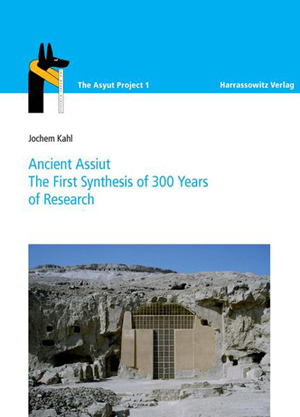Plant Remains found in the Tombs of Gebel Asyut, Egypt
Ahmed El-Khatib
Asyut was the ancient capital of the 13th Nome of Upper Egypt. With Gebel Abu el-Feda, to the north of the town, faces closely the curvy and dangerous course of the Nile therein; ancient Asyut had a great strategic importance for controlling the Nile passage to the north of the cataract. On the other hand, Asyut was the point of departure for the major caravan route of Darb el-Arbain, connecting the town with the oasis of Kharga and with the Province of Darfur in Sudan. The tombs under consideration (nos. I, II, III, IV, IV, V, and N13.1) were cut in the cliffs of the Western Desert for the governors of Asyut during the First Intermediate Period (ca. 2205-2020 BC) and the Middle Kingdom (ca. 2020-1630 BC).
Archaeo-botanical investigation was conducted at Gebel Asyut during August-September 2008 as an activity of the action plan of an Egyptian-German co-project of Sohag University (Egypt) and Mainz University (Germany) in the sixth season of field-work aiming at the documentation and the publication of the First Intermediate Period and Middle Kingdom tombs at Asyut. Visible plant objects were gathered during the excavation of tombs III, IV, and N 13.1 of the First Intermediate Period. These tombs have been visited before by numerous scholars and also reused during the Ptolemaic, Roman and Islamic Periods. It is obvious that these tombs were undergoing corruption during the recent time.
The objective of this inspection was to retrieve plant macro remains to identify the plant taxa, and to reconstruct possible human activities associated with plant processing, and their origin. During the inspection, the plant objects were collected from around the mummies within the coffins, baskets and mats, models and/or other material in the debris. Inspection of 1080 objects showed that they represent the two main categories of plant kingdom, gymnosperms and angiosperms. Magnified lens eye binuclear light microscope and scanning electron microscopy were used to examine the objects. The identified objects included seeds, fruits, flowers, reeds, rushes, tree remains and worked-wood.
The majority of seeds were to native plant species as Date Palme, Dom Palme, Barsah, Cordia, and common Olive. All of these species by other authors were previously described as ancient one and considered the main components of the plant communities during the Pharonic period. Nowadays, the majority of these species is rare and makes the eradicated flora of Egypt. Other recorded seeds were to foreign species characterizing the floras of the neighbor areas as Lebanon, Turkey, Syrian, and Asia, including those of Peach, Plum, Almond, Walnut, and Turkish hazel. Fruits objects are represented by those of cypress, Jerich Balsam and Christ-thorn. The inspected objects included only a floral object of Asteraceae type calling Marigold.
The objects of plant remains were to woody type of Acacia, Tamarisk, Date Palme, Christ-thorn, Willow, Sycamore fig, Pine, and Oak; cereal type of Broom-corn; vegetable type of Onion, crop type of Flax and fruit type of Grape vine and Fig. These remains were found as Plant branches detach in the debris. Originally, these objects are elements of the local flora, except date palm which introduced from Indian during the ancient period.
The inspected worked-wood objects were dominated by those of local trees as Acacia, Willow, Tamarisk and Sycamore. Other types, of low presence value, in the worked-wood objects were for the trees of cypress, ebony and cedar that have been either traded or cut from places very remote from Egypt itself as Minor Asia, Lebanon, Syria, Turkey, India, Sir Lanka, Somalia, and Greece. The inspected worked-wood objects denoted that both local and exported types were used for construction, manufactured of coffins; farm tools, and furniture.
Reeds and ruches are among the botanical elements recorded during the inspection of the tombs. Reeds represented by Common reed and Papyrus plants. Sharp grass and Cat’s tail represent the ruches element in the inspected objects. These plant objects were found as the bulk materials for basketry, construction and mats manufacture.
For full text, see:
Ahmed A. El-Khatib, "Historic Plant Records from Tombs of Gebel Asyut al-gharbi", in: Seven Seasons at Asyut: First Results of the Egyptian-German Cooperation in Archaeological Fieldwork, The Asyut Project 2, Edited by Jochem Kahl, Ursula Verhoeven and Mahmoud El-Khadragy, Harrassowitz Verlag, Wiesbaden, 2012, pp. 143-146.


